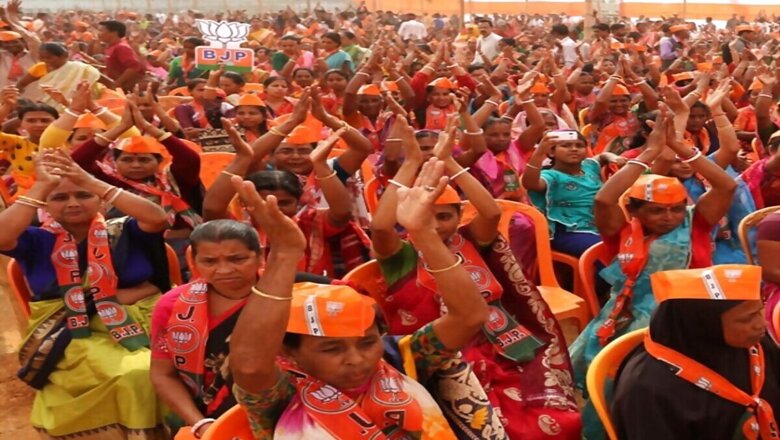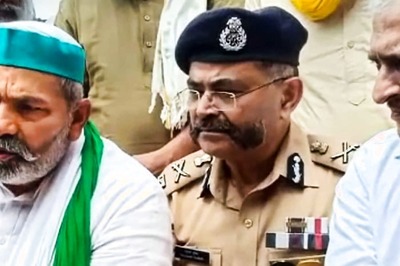
views
Under the leadership of Prime Minister Narendra Modi and Home Minister Amit Shah, the Bharatiya Janata Party (BJP) has accomplished many political feats that were unimaginable to political pundits 10 years ago. The BJP’s formation of governments in India’s Northeastern states is one of its greatest political achievements. Recent victories by the BJP in Assembly elections in Tripura, Nagaland, and Meghalaya serve as a reminder of their distinctive approach to politics. In Tripura, the BJP has formed its own government, whereas, in the other two states, it is a coalition partner. Nonetheless, the elections in the NE states have broken the Opposition alliance’s coalition. The Opposition’s egotism, lack of strategy, and disunity were exposed by these elections.
India’s NE states significantly have different social demography than the rest of the country. In these states, dominant regional political parties predominate. Previously, the Congress enjoyed a positive rapport with these regional political parties and benefitted from their alliances. Today, it is true that the BJP is also forming a number of alliances with regional parties, but the fundamental distinction lies in the form of government. While the Congress has always neglected the priorities of the Northeast, the BJP, despite being a smaller ally in some states such as Meghalaya, has never neglected to work for the region’s inhabitants.
The Congress’s primary issue, which was evident when they ran for office in the Northeast, is that they lacked a plan and a firm grasp of the state. In order to defeat the BJP in Tripura, the ancient party allied with its all-time adversary, the Left. On one hand, none of the national leaders, such as president Mallikarjun Kharge, Rahul Gandhi, or Priyanka Gandhi, campaigned for the party. On the other hand, without understanding the ground reality, diehard Congress supporters were hesitant to vote for a party they have fought against their entire lives. In the 2018 Tripura Assembly elections, the Left received 42.22 percent of the votes, while the Congress received less than two percent. After coming together, the Left’s vote share decreased to 24.62 percent, while Congress’ vote share increased to 8.5 percent. This demonstrates that the Left did assist the grand old party by transferring votes, but the Congress was unable to do so.
It is not easy for arch-rivals to form an alliance, but the most important and difficult task is to reach out to the people and convince them to vote for such an alliance. Neither the Congress nor the left had such strategies on the ground, but they announced an alliance to defeat the BJP. People did not have a plan, did not comprehend what was happening, and were accustomed to being out of touch with reality. Similarly, although the Left-Congress alliance was aware of the significance of the TIPRA Motha in securing the votes of the indigenous tribal population of Tripura, they never made a genuine effort to unite. The TIPRA Motha, which was founded only two years ago, is now the second-largest party in the state, with a roughly 20 percent vote share. This fragmented Opposition ultimately aided the BJP by cutting into each other’s support.
Meanwhile, Mamata Banerjee, the Chief Minister of Bengal and supremo of the Trinamool Congress (TMC) party, broke the Meghalaya Congress last year and snatched 12 of its 17 MLAs. This year, Banerjee fought on her own with the assistance of former Chief Minister Mukul Sangma. The party won approximately five seats with only 14 percent of the votes. It is crucial to note that after employing this strategy, the Congress’ vote share dropped from 28 percent to 13 percent, and it won only 5 seats compared to 21 seats in the previous election. The TMC received 13 percent of the votes after breaking Congress, which was a direct gain. Mamata Banerjee’s entire strategy did not harm the ruling National People’s Party (NPP), but it did cost the Congress votes. The Nationalist Congress party won seven seats in Nagaland with 10 percent of the votes. This also occurred at the expense of the Congress’ vote share.
With the decline of the Congress party, there is, without question, a vacuum in the Opposition. But from national platforms, Congress leaders will assert that one fine morning, every Opposition political party will unite and embrace one another, at which point an alliance will magically form. They also assert that this magical ‘mahagatbandhan’ will fight against the BJP machine and defeat Prime Minister Modi in 2024, which is less than a year away. It is ludicrous to believe that the Congress party expects the Indian populace to believe that such statements and promises will actually move them. It was abundantly clear in the Northeast how divisible and disorganised this Opposition is. The primary objective of these political parties is to improve their image by stealing votes from one another. None of these opposition parties are significantly eroding the BJP’s vote share, but they were aggressively campaigning, working, and thumping their chests for invading each other’s territory.
From the Congress to the TMC to the NCP, and in other parts of India, the Aam Aadmi Party (AAP) and others should realise that either they should take a stand that there will be no Opposition alliance before 2024 and that all these political parties will play their own games, or they should tell the people what this alliance will entail. When the Congress proposes an Opposition alliance, other political parties do not join, and when other political parties write a letter to the prime minister protesting the arrest of AAP leader Manish Sisodia, the Congress, the DMK, and a few other parties do not join. It is time for these politicians and parties to realise that what they are presenting to the Indian people is a fractured and divided unity. By presenting a fractured unity, it is impossible to form or reform an alliance with the trust of the people, as there is no remaining integrity.
The author is a Columnist and Doctoral Research Scholar In Media & Politics. He tweets @sayantan_gh. The views expressed in this article are those of the author and do not represent the stand of this publication.
Read all the Latest Opinions here
















Comments
0 comment